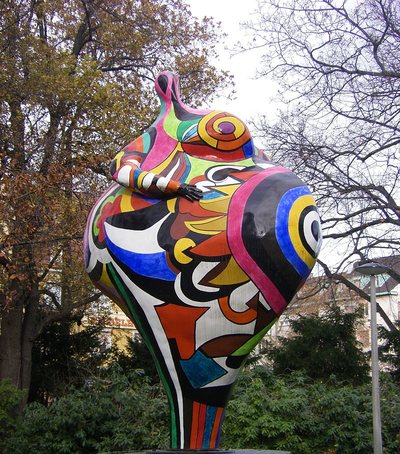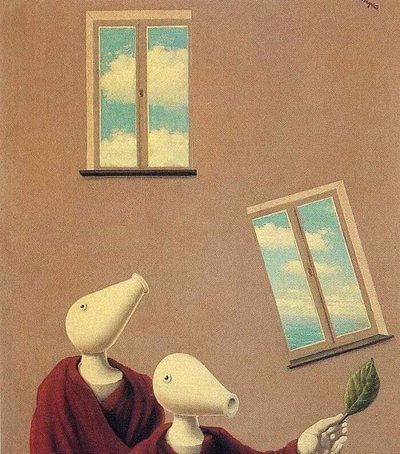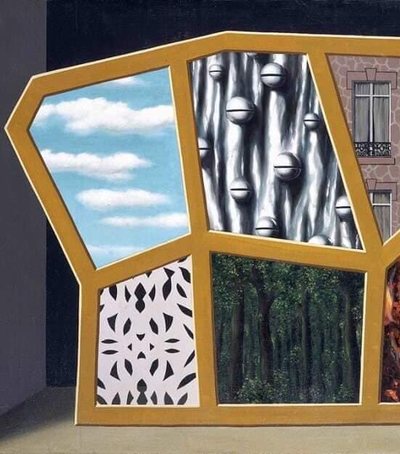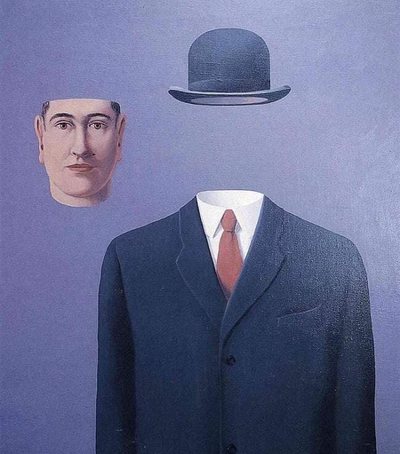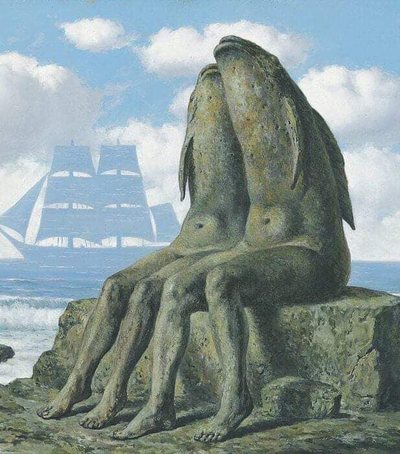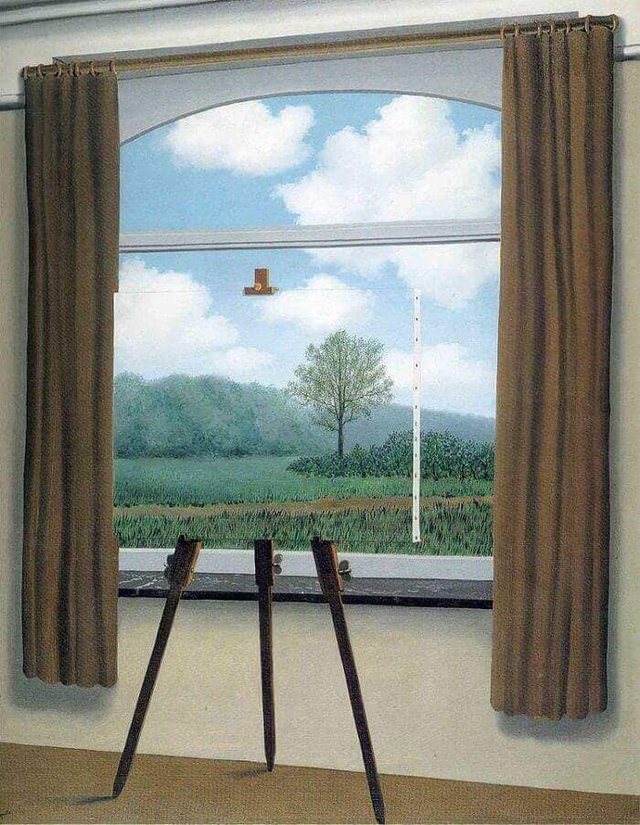

Two of Magritte's favorite themes were "window paintings" and "paintings within paintings." The painting "The Human Condition" is one of Magritte's earliest treatments of both of these subjects, and in it he combines the two, making what may be his most subtle and profound statement of their shared meaning.
“The Human Condition” depicts an easel placed inside a room and in front of a window. The easel holds a framed painting of a landscape, which in every detail resembles the landscape we see outside the window. At first, we might assume that the painting on the easel represents a proportion of the landscape outside the window that it prevents us from seeing. However, after looking at it for a while, we realize that our assumption is based on a false premise: that is, that the imagery of Magritte’s painting is real, while the painting on the easel is a representation of reality. In fact, there is no difference between them. Both are part of the same painting, of the same artistic fabrication. Perhaps because of this repetitive cycle, the viewer, even against his will, sees one as truth and the other as another representation, which is what Magritte's title refers to.
Magritte's use of the curtain in this painting is reminiscent of similar uses by a number of Old Masters as a trompe-l'oeil (visual illusion) to draw the viewer into the composition, showing the tricks of the scene, and also showing their own ability to paint something like hanging a curtain in front of a painting; for example, this was the case with the paintings "The Art of Painting" and "Girl with a Pearl Earring" by Johannes Vermeer. Magritte's play with the nature of the painting's surface is given great purpose by his use of these artifices such as in the curtain scene of "The Human Condition".

